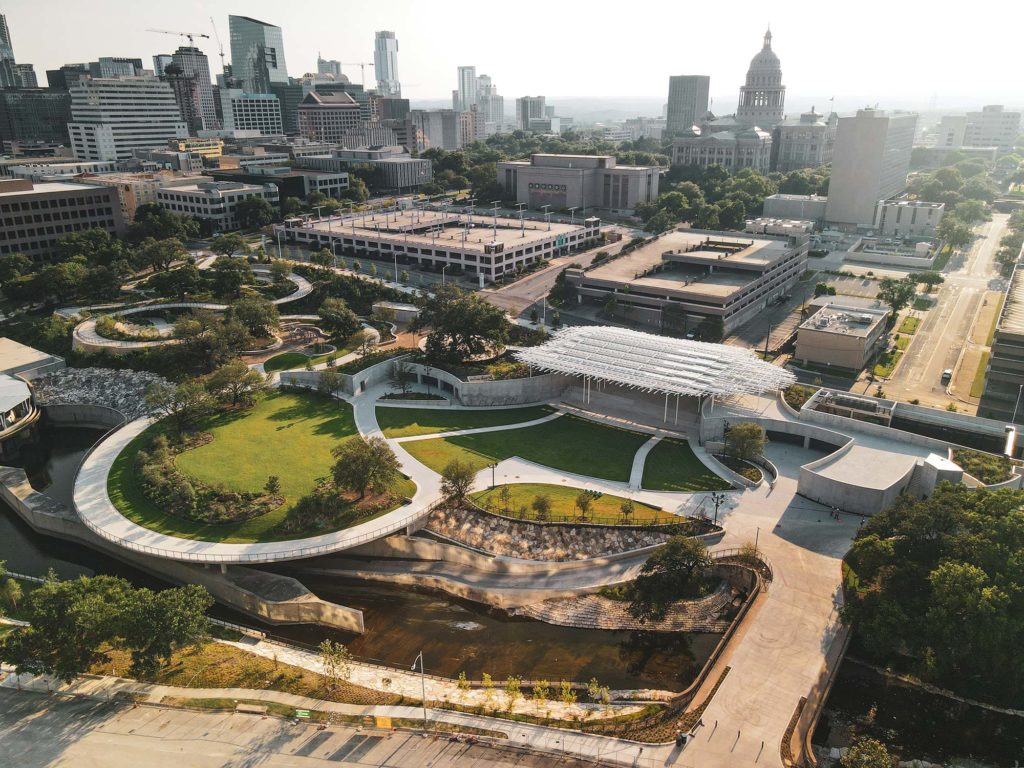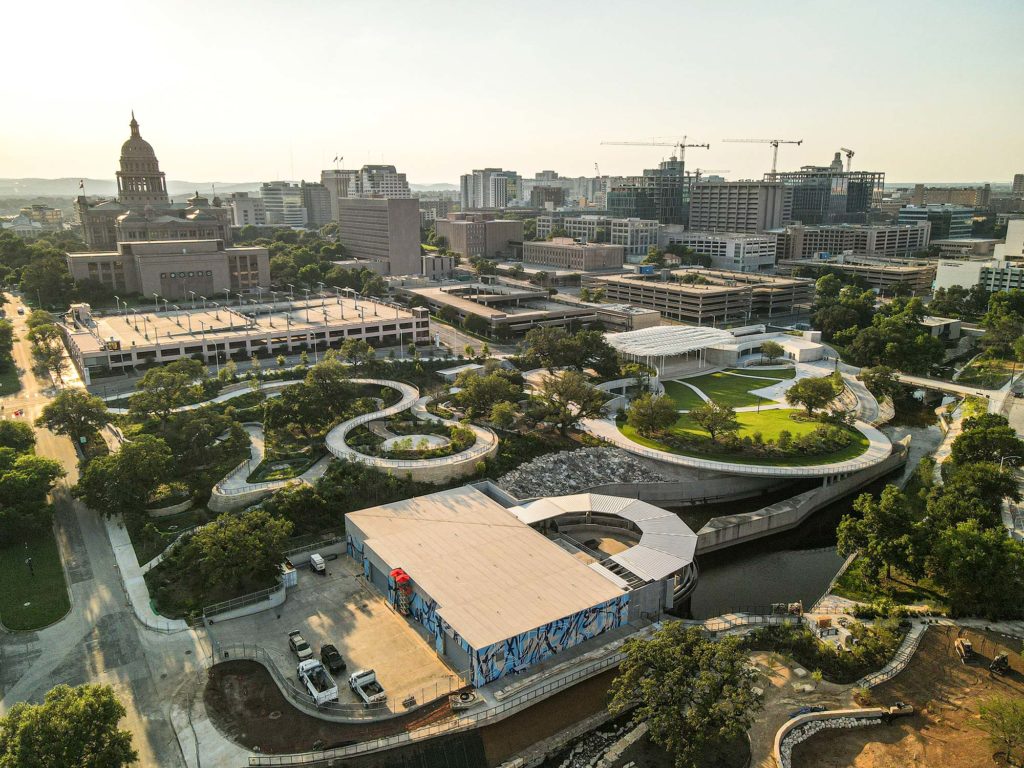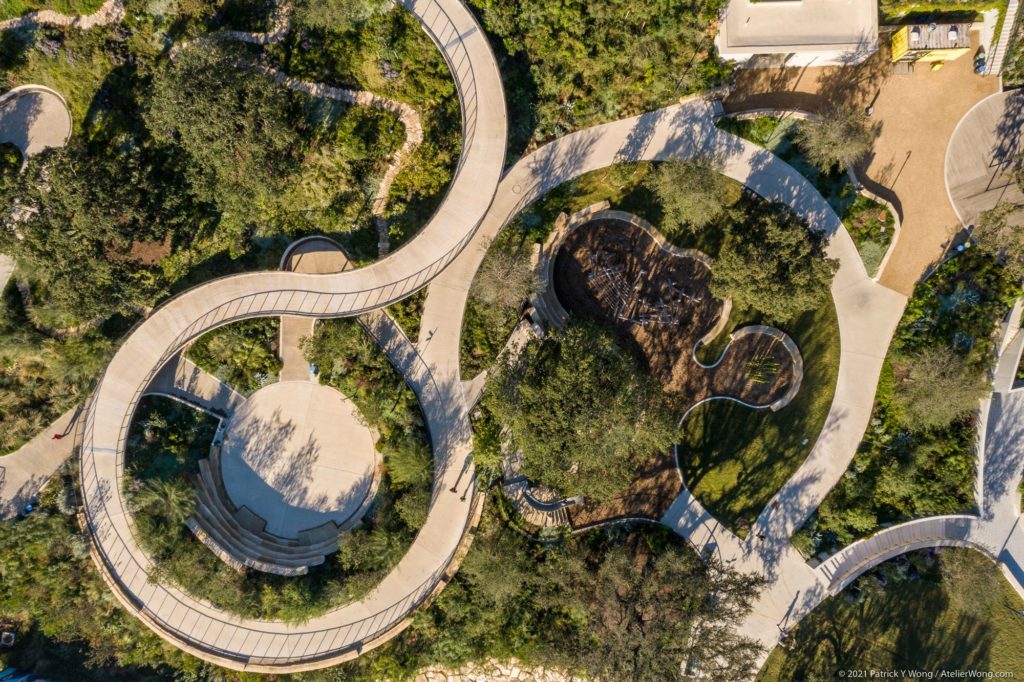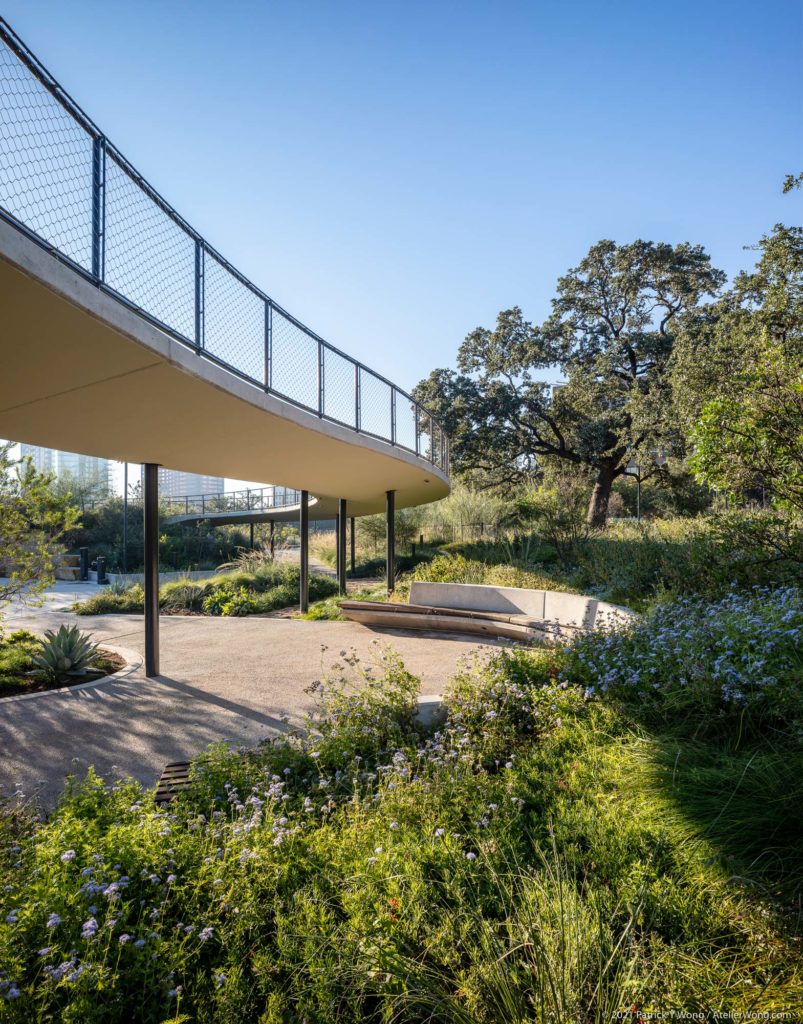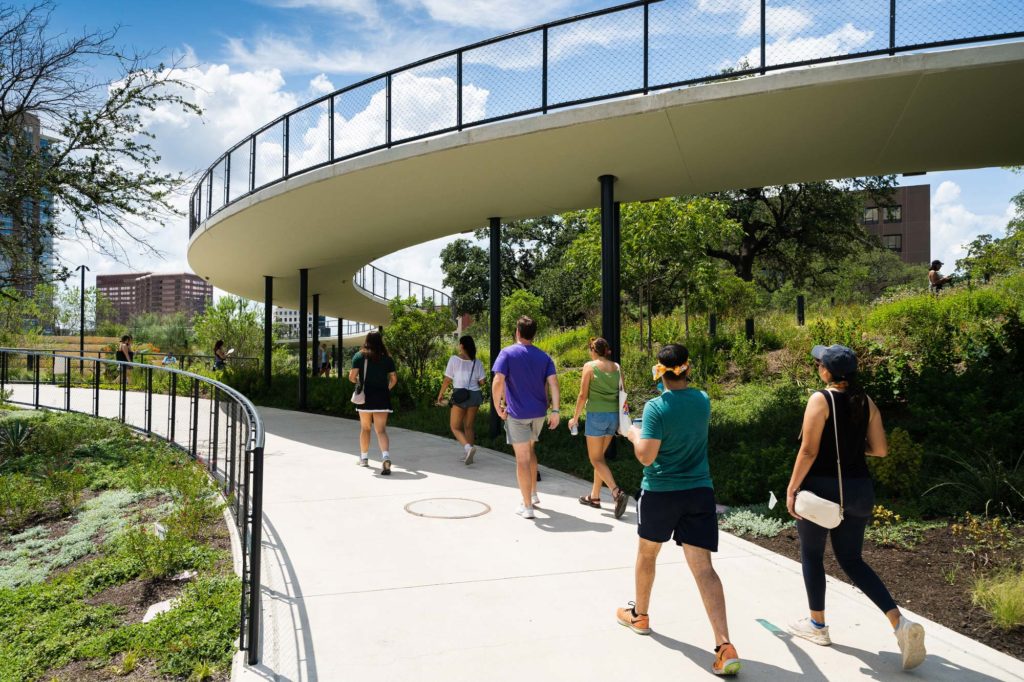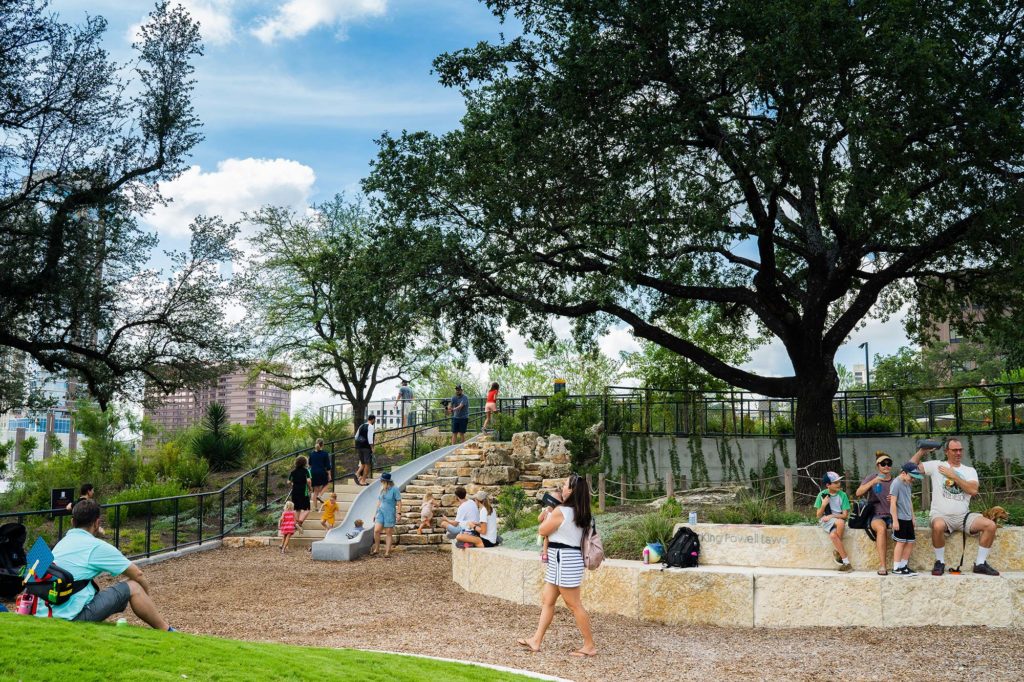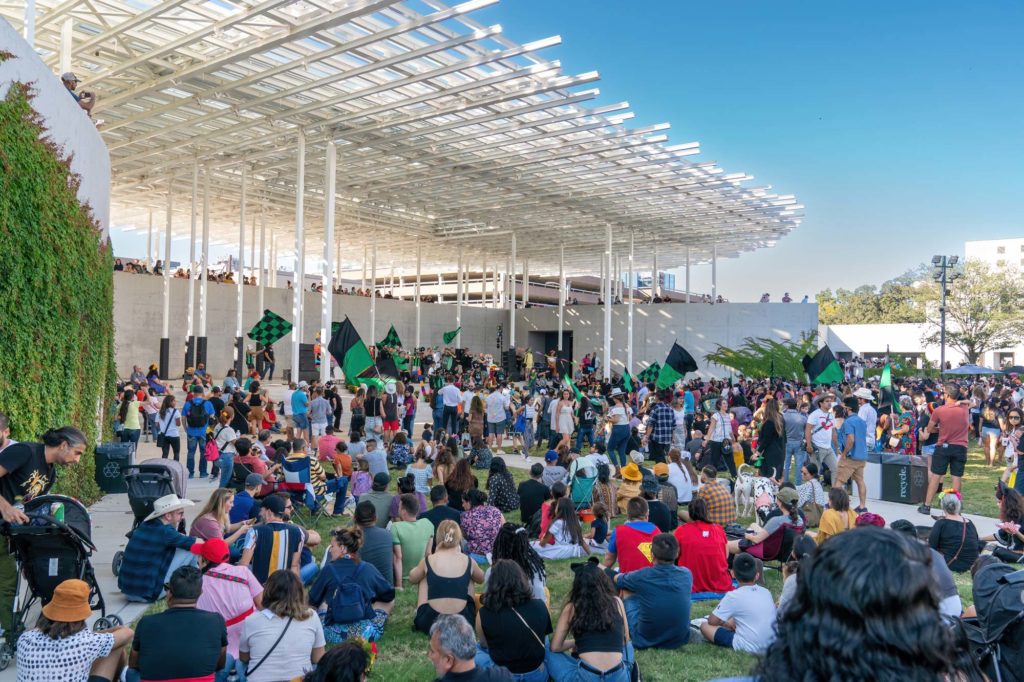In 1839, the city of Waterloo (now Austin) was founded on the north bank of the Colorado River. While that original name did not last long, modern-day Waterloo Park and the revitalized Greenway that connects it to the shores of Lady Bird Lake have given it a second life. The surrounding neighborhood—originally home to significant Black and Mexican-American communities forced out by the 1928 City Plan—has changed just as much as the park, with a new medical center, offices, and condos all within view of the park.
The majority of the park’s amenities are accessed from the southwest entrance at 12th and Trinity. An accessible skyway winds its way over a landscape of native vegetation before gradually touching down next to a colorful playground and food truck park. The sinuous path then lifts off once more, cantilevering over Waller Creek to define a circular lawn that is part of an outdoor amphitheater capable of seating up to 5,000 spectators. Above the stage, a canopy of stacked steel beams is meant to evoke a garden trellis; on a clear day its dappled shade resembles clouds and tree canopies. The bridge leading east from the amphitheater overlooks a restored section of the creek and features bilingual panels that provide an in-depth look at the park’s history and ecology.
While the concert venue pays tribute to Waterloo’s musical heritage, the most delightful area of the park is undoubtedly the Hill Country Garden, where pollinators flit among hundreds of indigenous wildflowers and shrubs shaded by heritage oak trees (including eight saved from various developments across the city). Meandering limestone trails enable visitors to explore a landscape removed from the hustle and bustle of downtown—all within view of the Capitol dome. Functional and beautiful, these gardens filter rainwater collected in underground cisterns for use throughout the park.
Before you leave, note the large concrete-and-steel structure on the south edge of the park (it’s hard to miss). This water intake facility marks the beginning of a mile-long tunnel that runs beneath downtown to Lady Bird Lake. The tunnel—which expands to 26 feet wide—protects the downstream area from flooding and allows water to be pumped back from the lake to maintain the creek’s flow during dry periods. A monumental undertaking, this rather bland piece of infrastructure has played a transformative role in the decades-long mission to revitalize Waller Creek. – Bud Franck
Sustainability Highlights
AEGB 4-Star (Austin Energy Green Building)
